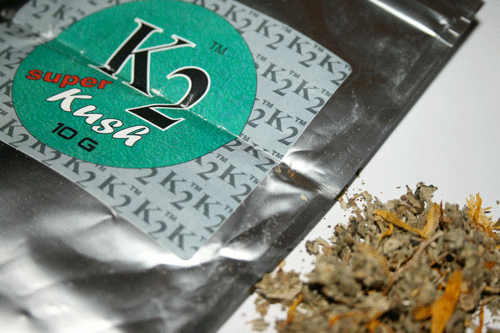

By Jami Davis
Synthetic marijuana is now being thought of as dangerous, and is subject to being banned. The product is often referred to as “K2”, “Blaze”, “Spice” and other names, depending on the manufacturer.
The product originated when scientists created a synthetic version of the THC found in marijuana, in hopes of finding an avenue to produce therapeutic drugs. Two of the drugs commonly found in synthetic marijuana products are HU-210 and JWH-018, laboratory made chemicals produced to mimic the effects of THC.
Synthetic drugs draw users in because they have not yet been isolated in urine-based drug test. Drug users get a high, while not facing the legal consequences. However, the drugs may have more dangerous consequences than a run in with the law.
“Synthetic drugs are chemicals that people are putting into their bodies. Many chemicals react in harmful ways when put in your system. The FDA does not test these products. People who use synthetic drugs are at great risk, just to get high,” Officer Butch Pearson said.
Synthetic marijuana is sold in packages, usually about three grams in size, and can be expensive.
Manufacturers advertise these products as “incense” or “herbal blends” “not for human consumption”.
“Herbal blends” found in synthetic marijuana include “dwarf skullcap”, “Indian warrior”, “honeyweed”, “beach bean” and others.
Negative effects of using synthetic marijuana are only known on a short term scale. Long term effects are completely unknown, and no testing has yet been done to determine them.
Short term effects of synthetic marijuana include burning of the throat and lungs, hallucination, unusual heart beat, nausea and in some cases, death. The side effects of using synthetic marijuana have been responsible for hundreds of calls to poison control centers and hospitalizations in individual states alone.
Legislation in some states is being worked on to illegalize these substances and minimize damage to human lives.
“Laws are being passed now to stop the sale of these drugs. My concern is the health risk and long term effects,” Pearson said.